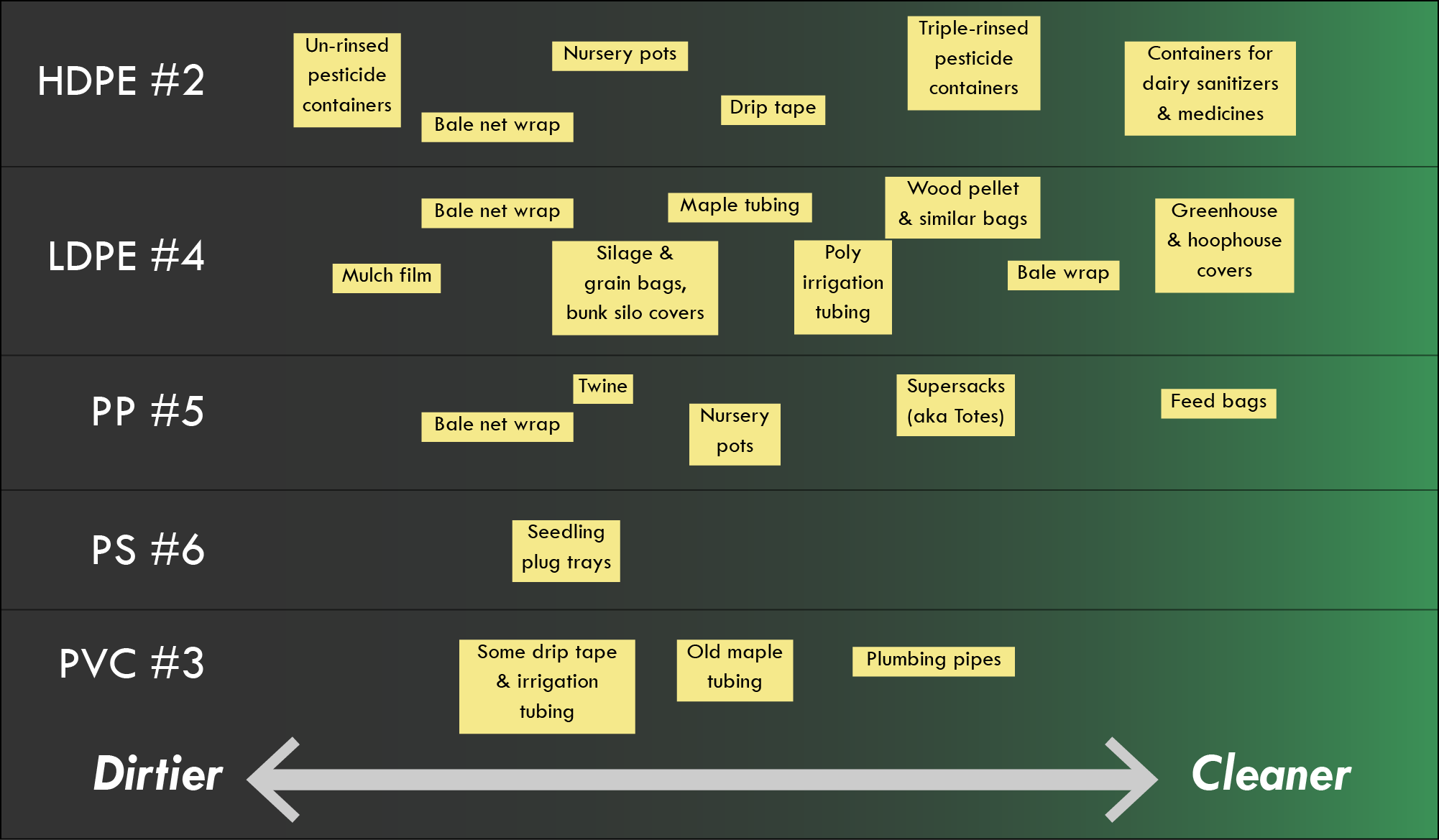Research Articles
Growing with Bioplastics
Grey to Green Sustainable Solutions
Published June 2020 in 62nd Annual Horticulture Growers’ Short Course 2020 Proceedings
Abstract
Canadian agriculture relies on plastic use throughout all stages of operation; from greenhouse covers, crop mulches and seedling trays used in growing; to labels, plastic wrap and containers used to package products for the consumer. In 2012, BC agriculture produced 3620 tonnes of plastic waste, with 51% of this being plastic film. Recycling of this agricultural plastic is challenging, as it is often contaminated with soil and other organic matter. Local farmers, growers and producers must package their products in order to ship them to markets across Canada and the world are searching for ways to reduce plastic waste while ensuring that products find appropriate end-of-life facilities.
Use of compostable plastics and packaging has the potential to reduce the amount of organics-contaminated waste going to landfills from the agricultural industry. The compostable plastic industry is currently slow to develop materials for targeted use in agricultural settings. New products and processes are required before the full potential of these materials could be met. To further ensure that the application of these materials has the most positive impact on agricultural production, in-depth exploration into their short- and long-term impacts on soil ecosystems are crucial.
This report explores the challenges faced by farmers when using biodegradable materials in their growing processes and outlines current research on how these these plastic fragments impact soil microbial communities, ecosystem functions and soil health.
Composting Biodegradable Plastics: A Technical Review
Grey to Green Sustainable Solutions
Published May 2019
Abstract
Biodegradable plastics have the potential to reduce the environmental impact of plastic pollution, while certified compostable plastics have the long-term potential to divert substantial amounts of waste packaging materials from landfills. Despite the growing role of compostable products, many regulators and users cite concerns about unpredictable or incomplete breakdown of
biodegradable plastic. Composting is the accelerated degradation of heterogenous organic matter by a mixed microbial population in a moist aerobic environment under controlled conditions. Currently many commercial composting facilities only address
garden and food waste and are not adapted to processing biodegradable plastic. Although collection of biodegradable plastic into municipal organic waste streams is increasing in some regions, evidence to show they are contributing to overall compost quality is scarce and sometimes contradictory.
Biodegradable plastic breakdown occurs through a synergy of abiotic and biological processes. The ultimate result is a reduction in the molecular weight of polymers followed by biological conversion of the polymer breakdown products into carbon dioxide and water. Microorganisms use various mechanisms to degrade complex polymeric material including direct use of plastic fragments as a nutritional source or via the indirect action of microbial enzymes. The presence and abundance of microbial species is highest in
compost, followed by soil, fresh water, marine water and finally landfills.
The goal of this technical review is to provide insight into biodegradable plastic degradation, compost processes and the role biodegradable plastics can play in reducing plastic pollution and generating valuable compost.
How Do We Use and Recover More Compostable Packaging: Canadian Perspectives
Product Design and Packaging Working group with the National Zero Waste Council
Published May 2019
Abstract
Certified compostable packaging has become more commonly used in food packaging and could play a more important role in both diverting waste from landfills and meeting circular economy goals. Compostable packaging is designed to be disposed of in existing publicly accessible organics compost infrastructure and then to be recycled back into fertile compost. As a material, compostable packaging flows through a life cycle that links various stakeholder groups into a sustainable materials management value chain or circular economy.
Through stakeholder consultation, participants were asked to explore key issues and identify strategic solutions to improve the use and recovery of compostable packaging in Canada. Through this process the need for more rigorous enforcement of existing labelling regulations was identified as important. At the same time stakeholders across the value chain expressed a desire to develop easy to understand resources and publicly accessible databases that would facilitate and enhance communications throughout the value chain. In general, stakeholders believe that better communications and public education for end users,
waste stream managers and the compostables industry would encourage more facilities to accept compostables and make composting practises for compostable packaging more uniform. To realize the opportunities associated with closing the loop on
compostable packaging, governments, businesses and non-government organizations will need to take leadership in identifying interconnected solutions required to achieve full circularity for compostable packaging.
Synthesis and Thermorheological Analysis of Biobased Lignin-graftpoly(lactide) Copolymers and Their Blends
University of British Columbia
Published January 2018
Abstract
Despite numerous accounts of biobased composite materials through blending and copolymerization of lignin and other polymers, there are no systematic studies connecting the synthetic methodology, molecular structure, and polymer topology with the rheological properties of these materials. In this report lignin-graft-poly(lactide) copolymers are synthesized via three routes (indium and organocatalyzed “graft-from” methods as well as a “graft-to” method) and the resulting reaction products (shown to include linear PLAs, cyclic PLAs, and star-shaped lignin-graft-PLA copolymers) are investigated using chemical and rheological methods. The topology of the products of the graft-from methods is affected by the initial lignin concentration; polymerizations with low lignin loading generate cyclic PLAs, which can be identified by 10-fold lower viscosities compared to linear PLAs of the same molecular weight. Under higher lignin loadings, star-shaped lignin-graft-PLA copolymers are formed which show viscosities 2 orders of magnitude lower than those of comparable linear PLAs. Rheological studies show that cyclic PLAs lack a well-defined rubber plateau, whereas star-shaped lignin-graft-PLAs lack a significant G′ to G′′ cross-over.
The rheological results coupled with thermogravimetric analysis give an indication to the structure of star-shaped lignin-graftPLA copolymers, which are estimated to contain a small lignin core surrounded by PLA segments with molecular weights from 2.0 to 20 kg mol-1.




